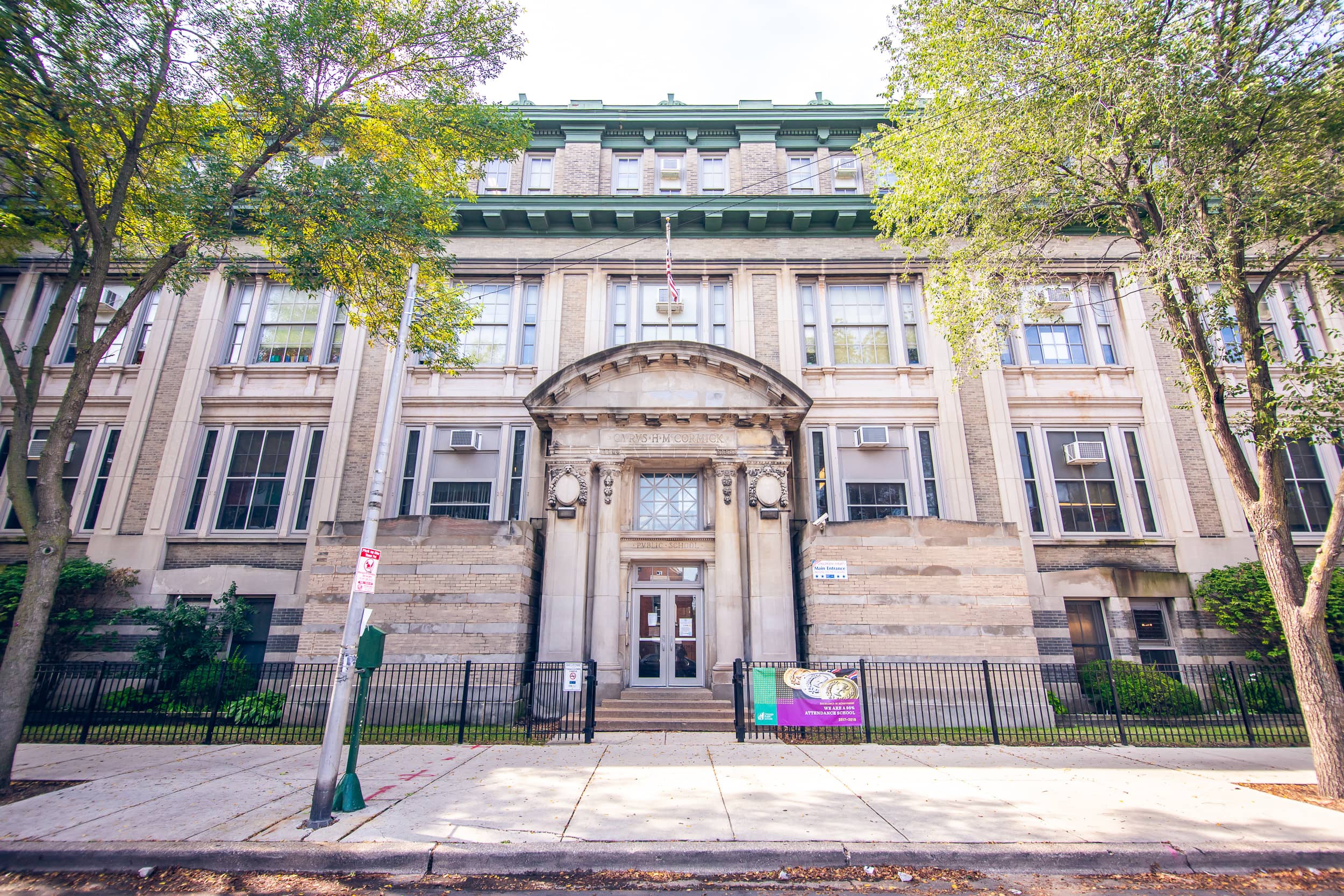McCormick Teacher Draws on Personal Connections to Bilingual Education
15 September 2022
Forming new connections for her students between school and home has been a key part of growing as an educator for Ms. Soto.

Ms. Daniela Soto’s first year in Chicago Public Schools shaped the trajectory of her life. She was 13 years old and in seventh grade at an elementary school on the Southwest Side. She had just immigrated to Chicago from Mexico and explains that, while her teacher did her best to support her, her teacher was ultimately unprepared because her school did not have a bilingual education program at the time.
So, she decided that she would become a teacher with a specific focus on language acquisition. She wanted to reach students as early as possible to provide them with a strong academic foundation, which led her to McCormick Elementary in Little Village, where she currently teaches first grade as part of their bilingual education program.
Her instruction is conducted in Spanish about 80 percent of the time, and the remaining 20 percent is reserved for helping students build their vocabulary and conversational skills in English. With a decade of teaching experience under her belt, she’s found that the best way to help students build their confidence in both languages is to keep things fun, while also making sure that every lesson is intentional.
“I always have high expectations for my students, but, at the same time, I have to remember that they’re six years old and still developing, so I have to make sure that school is still fun for them,” she said. “They love bingo, so we’ll do bingo with high-frequency words, and they love when things are hands-on, so we’ll use sand timers to see how many words they can read in one minute.”
An impactful teacher like Ms. Soto would make a difference anywhere, but she feels a direct connection to teaching in Little Village, which she describes as “a piece of Mexico in Chicago.” She describes walking in the neighborhood surrounding McCormick as being embraced by Mexican culture wherever you go, from the murals to the restaurants to the local family-owned businesses.

Because Little Village is such a family-oriented neighborhood, Ms. Soto deliberately gives students opportunities to collaborate with their families on their classwork. For example, one of her favorite projects involves a questionnaire that students take home. They ask their families about traditions, food, and activities that are central to their life at home, and then they return to school and present that information to their peers.
Forming new connections between school and home has been a key part of growing as an educator for Ms. Soto. She notes that, when she was just starting out, her goals largely centered on meeting everyone’s expectations and getting to know the curriculum. Now that she has more experience, she’s focused on meeting the needs of the whole child and advocating for both her students and bilingual education as a whole.
“My colleagues tend to describe me as having so much patience for my students, and I think that comes from caring for their academic side, their social-emotional side, and ensuring their basic needs are being met,” she said. “I always see myself staying in the classroom, and, in the years to come, I want to build the leadership skills to advocate more for my students outside of the classroom.”
Tying directly to her goals, Ms. Soto hopes that the District will continue to give bilingual education the attention it deserves. In particular, she’d love to see CPS expand dual language programming by giving a few new schools, including McCormick, a dual language program each year. In one word, she views the impact that teachers have on their students as “powerful” and knows they can make an even bigger difference with the right programs and resources to support them.
“My classroom is very colorful and joyful, because my students spend more time here than anywhere else, and I want them to feel happy and like this classroom belongs to them,” she said. “In my classroom, most of them will be strongest in Spanish because it’s their first language, but their English will improve as they continue to learn. Ultimately, as they get older, I want them to view their bilingualism as an advantage rather than a disadvantage.”

Related Stories
30 May 2025
Unleashing Creativity: Take Five with Jequeline Salinas
Ms. Salinas has been the art teacher at James Hedges Fine and Performing Arts School for 18 years.
29 May 2025
Celebrating Our Related Service Providers
These amazing staff members work behind the scenes to make sure that CPS kids have the supports they need to reach their full potential.
23 May 2025
Embracing Innovative Classroom Practices: Take Five with Charlene Clay, a Special Education Teacher at Rudolph Learning Center
Ms. Clay steps outside the standard curriculum to embed creative, immersive learning experiences in her classroom.
09 May 2025
Learning Alongside My Students: Take Five with Melissa Flisk
Ms. Flisk strives to create a calm and welcoming environment that celebrates her students’ interests, needs, skills, and personalities.




